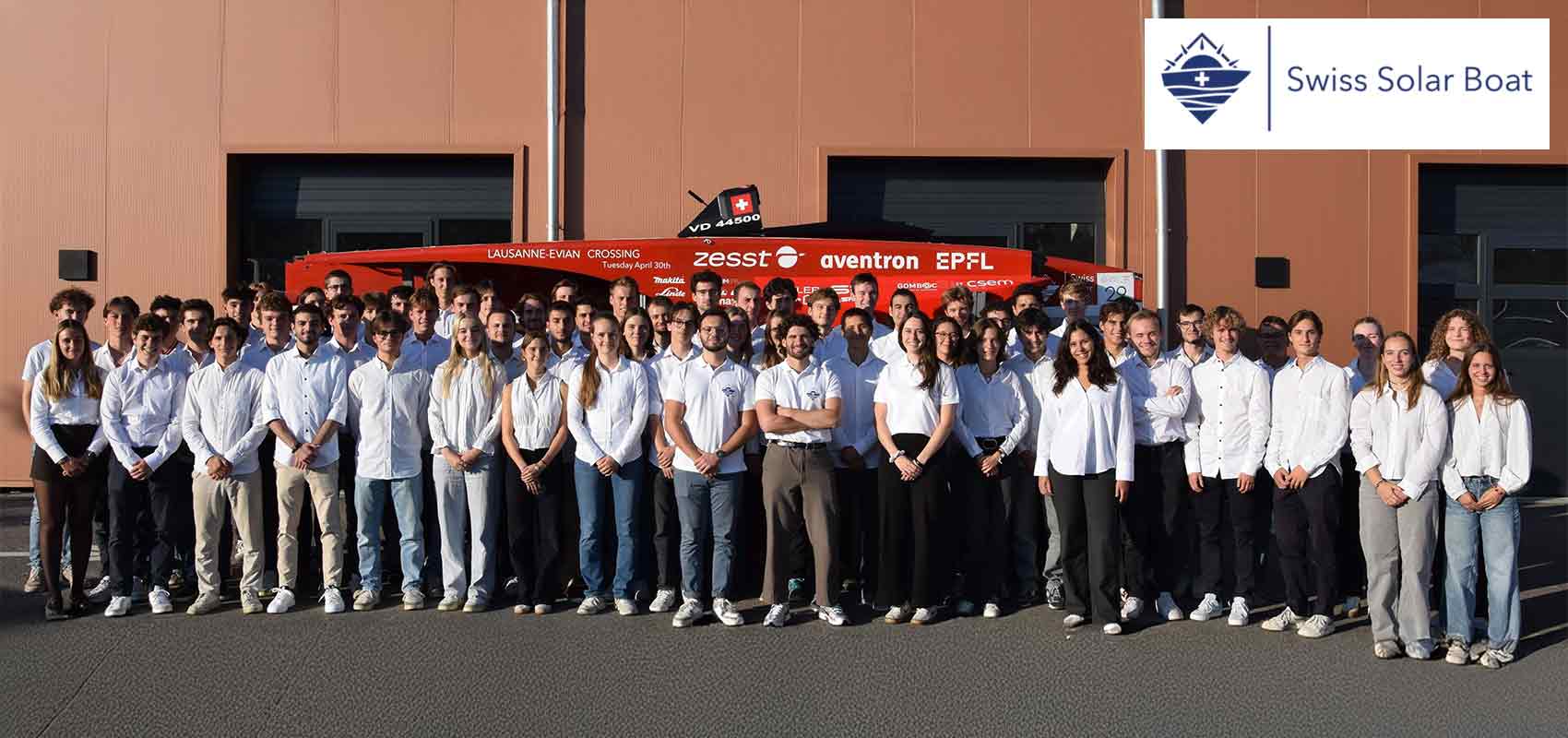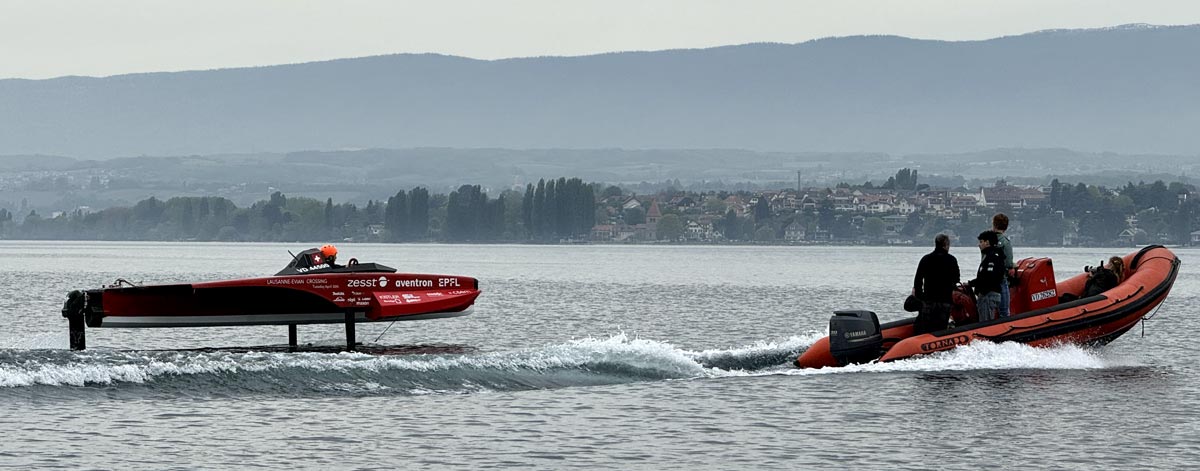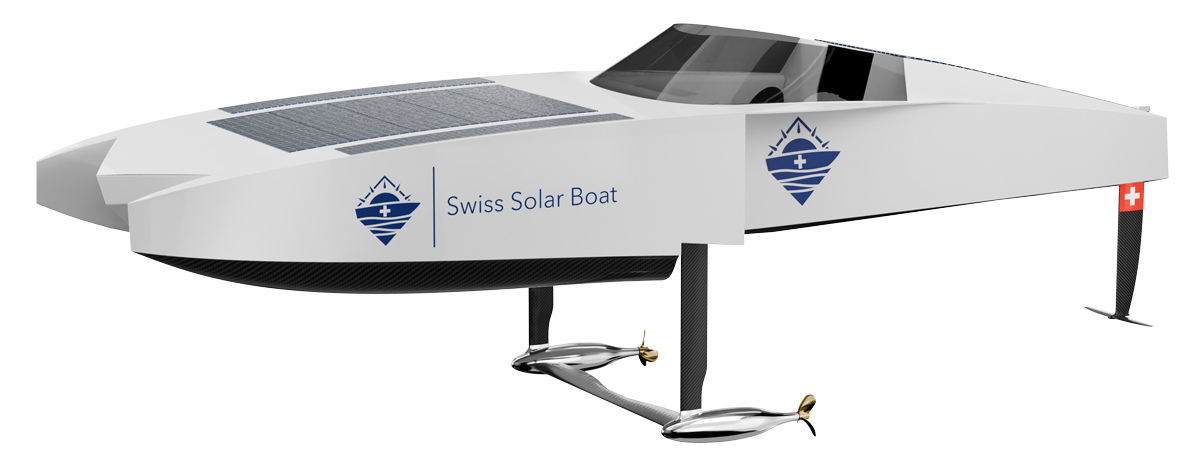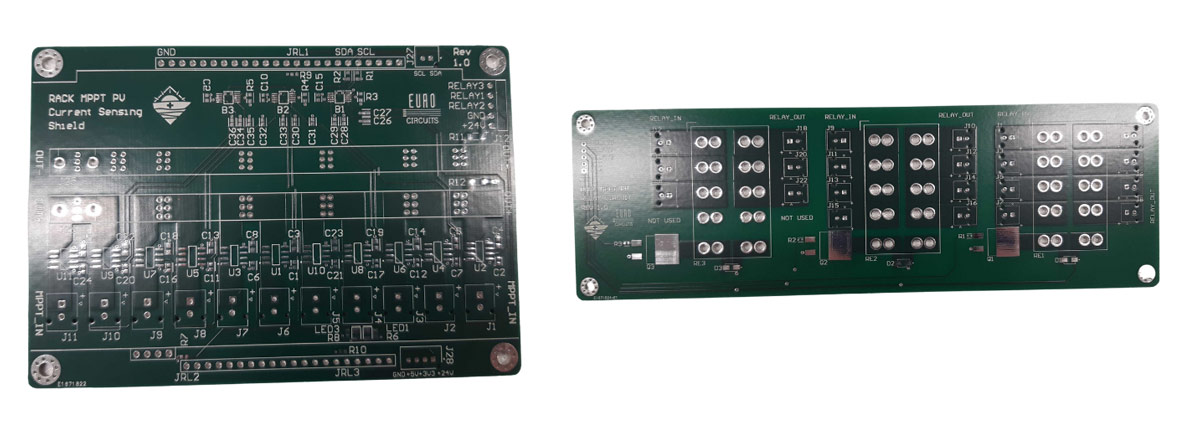Swiss Solar Boat: A Journey Toward Green Innovation

Hey there! We are Swiss Solar Boat, a student-led team founded in 2019 at EPFL, the Swiss Federal Institute of Technology with the vision of designing and building high-performance, sustainable boats powered by renewable energies such as solar power and hydrogen. Our journey started with a one-seater solar boat, the Dahu—named after the Swiss mythological creature—competing in the Monaco Energy Boat Challenge, where we delivered remarkable performances. Seeking new frontiers, we decided to integrate a hydrogen fuel cell into our boat, making it a hybrid solar and green hydrogen-powered vessel.

This energy mix enabled us to cross Lake Geneva, from Lausanne to Évian, proving the feasibility of green hydrogen as a viable maritime energy source for passenger transport. This crossing was also symbolic, as passenger transport represents 40% of maritime traffic on Lake Geneva.

Now, we’re taking things to the next level: designing and building a brand-new three-passenger foiling boat, powered by a hybrid system combining solar energy and green hydrogen. After a full year of intense design work, we are now in the production phase.In any high-performance electric boat, the electronic systems are just as critical as the hull, foils, or propulsion. We rely on custom-designed PCBs (Printed Circuit Boards) to ensure efficient energy management, seamless communication between systems, and real-time data processing.We’ve just received our first PCBs from Eurocircuits, and we have to admit, getting into hands the physical boards that we spent the last semester designing is really a great feeling. Our first boards are two parts of our MPPT system, ensuring that we extract the maximum energy from our photovoltaic panels; an interface between our Raspberry Pi embedded computer and the CAN bus connected to the rest of the boat; and a small breakout board to test chips we’ll use in later designs.

Once we received our PCBs, the next step was assembly and soldering. Depending on the complexity of the board, we use different techniques: For simpler PCBs, our team members use tweezers and a soldering iron to carefully mount small components. For some, this was their first experience handling surface-mounted components, while others—more experienced in PCB assembly—were able to guide and train them. For more complex PCBs, we ordered stencils along with our PCBs, allowing us to apply a precise amount of solder paste onto the contact pads. After carefully placing the components, the PCB is heated in an oven, ensuring a professional-quality soldering process. We’re now left to test how our PCBs works, which is another exciting part of electronic design.
Thanks to our partnership with Eurocircuits, we received high-quality PCBs within a week, significantly reducing development time and enabling rapid iteration. Keeping our supply chain within Europe aligns with our sustainability goals, reducing transportation emissions while maintaining high manufacturing standards. Eurocircuits’ online design verification tool allowed us to double-check our PCB layouts before finalizing orders, ensuring we get exactly what we need and reducing errors before manufacturing.

For more information please visit the EPFL Swiss Solar Boat website.





